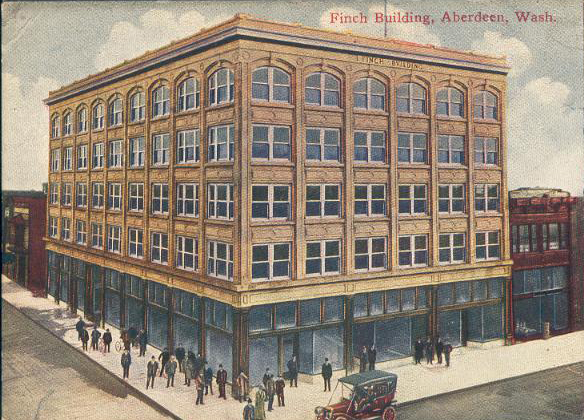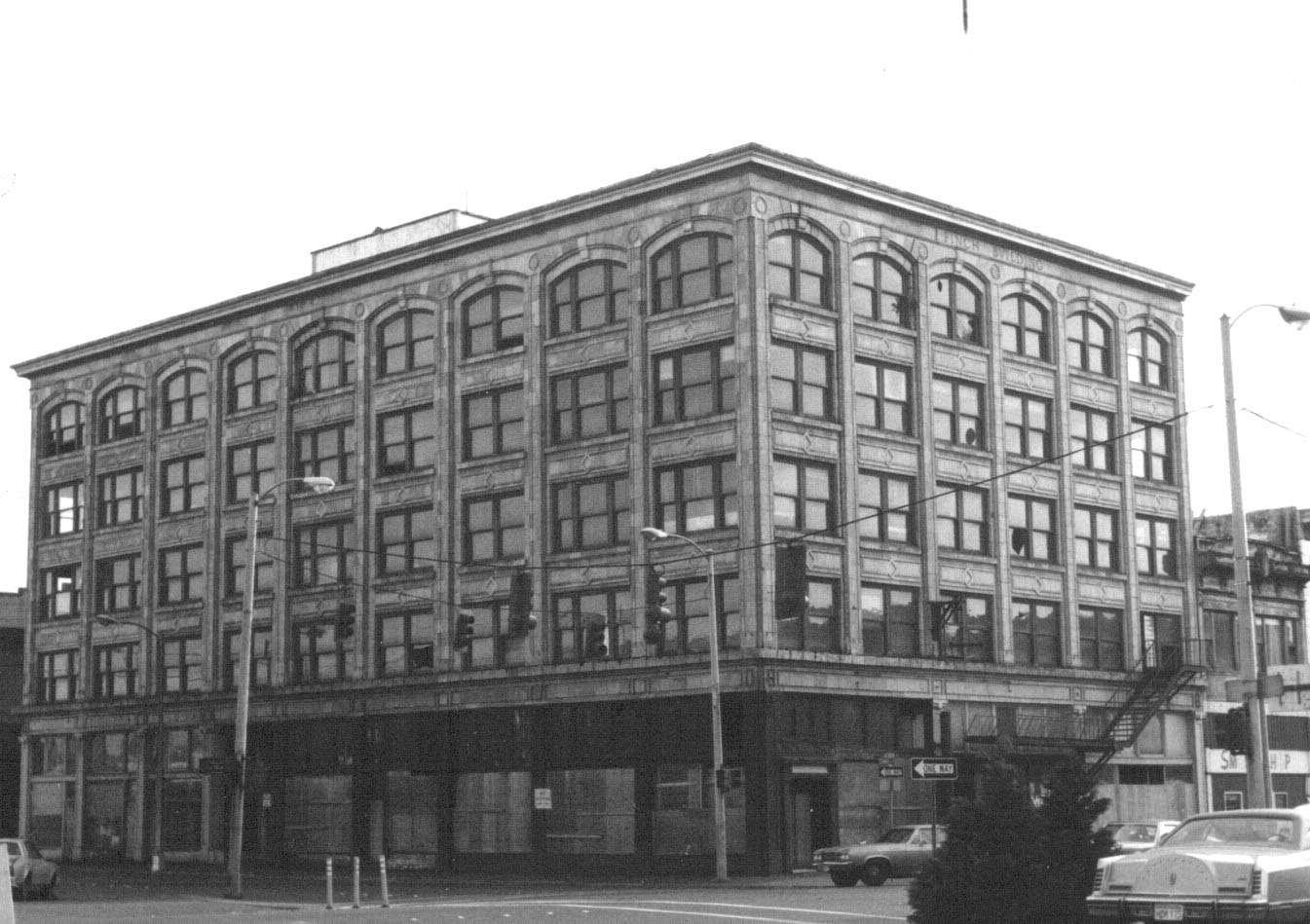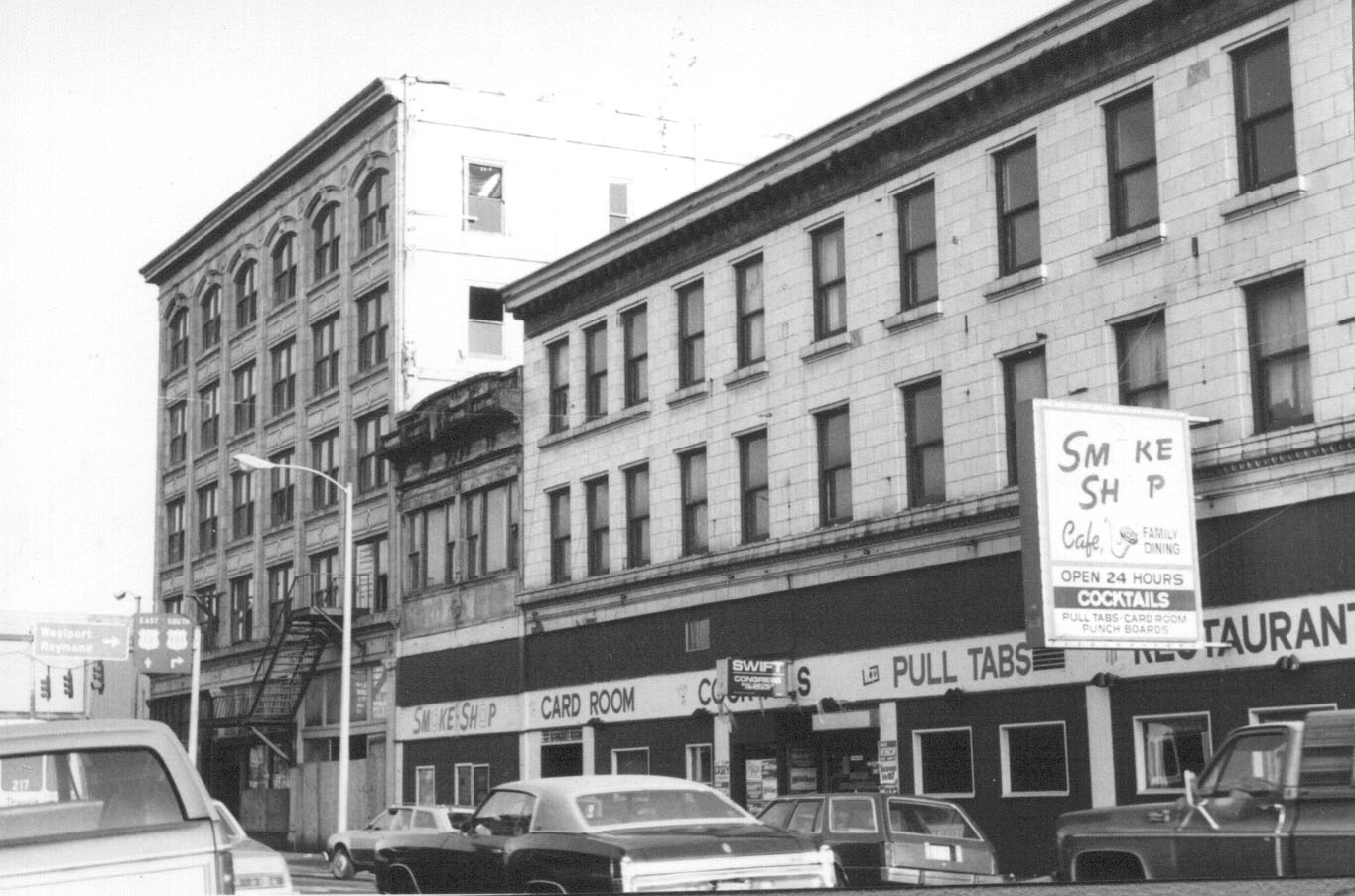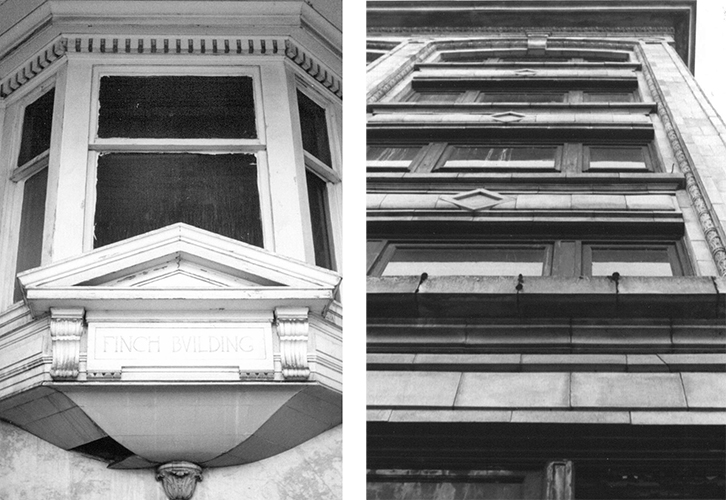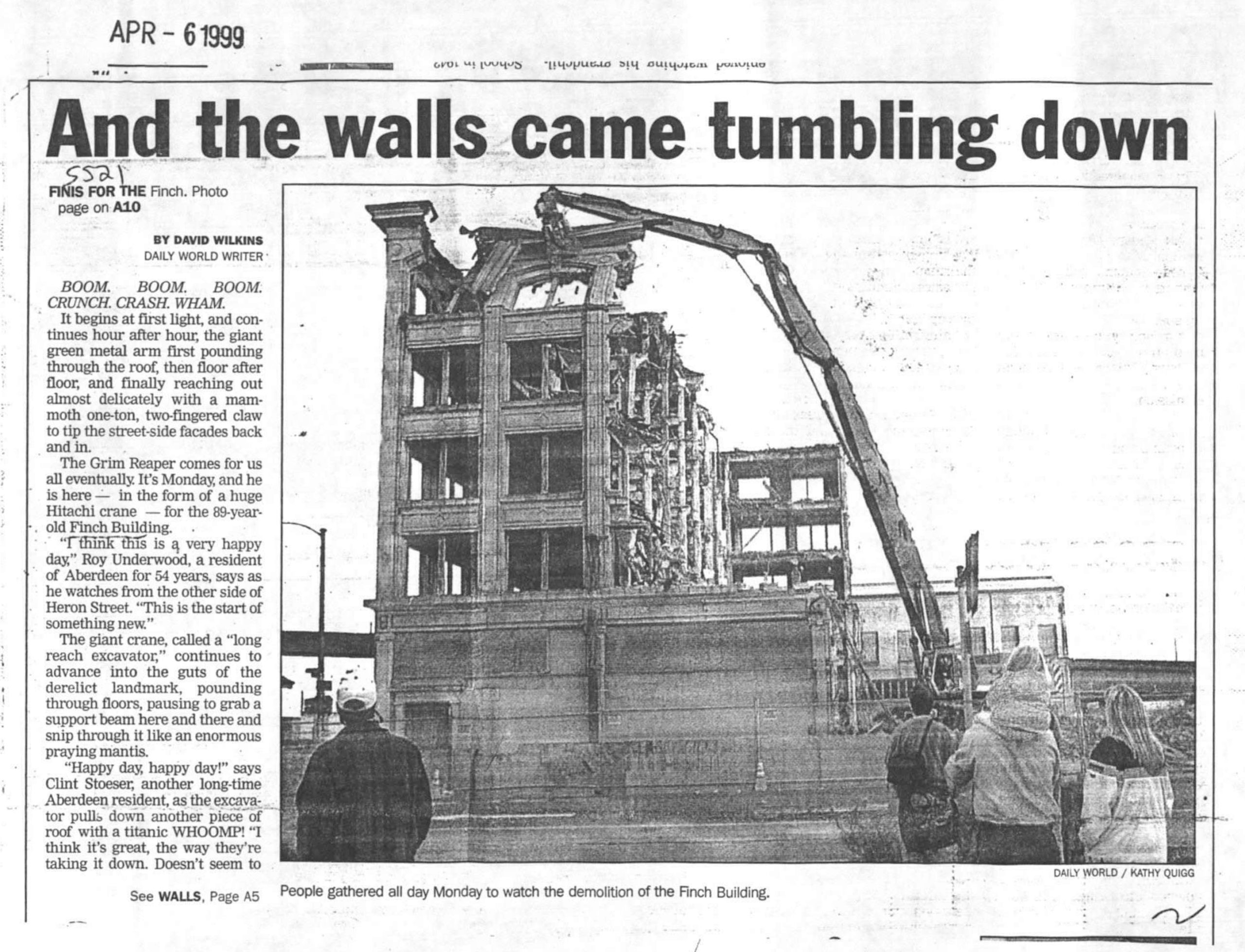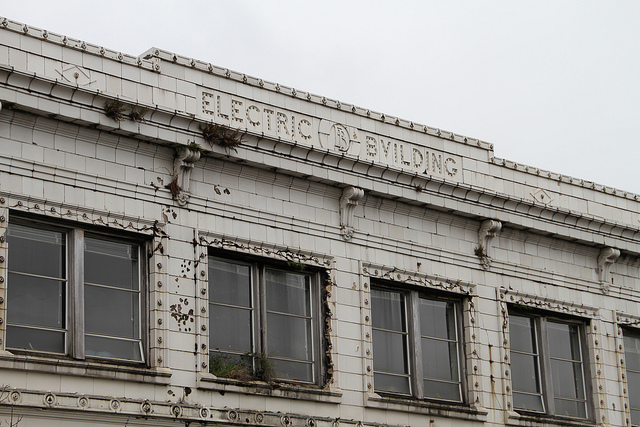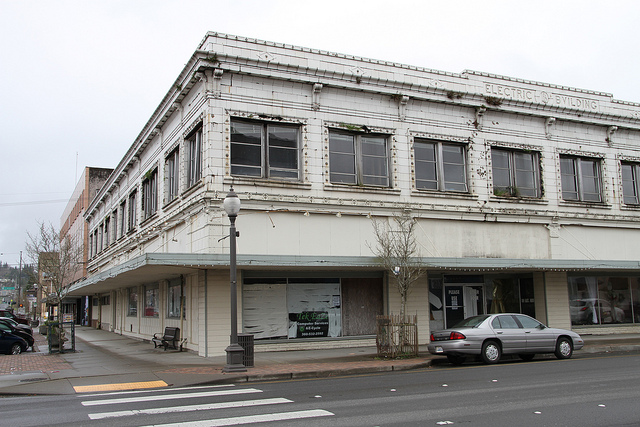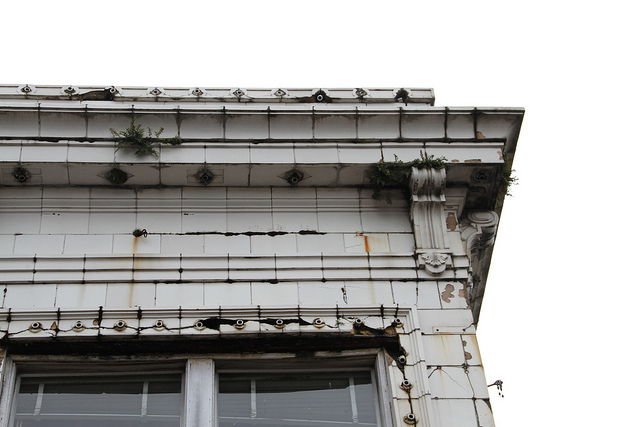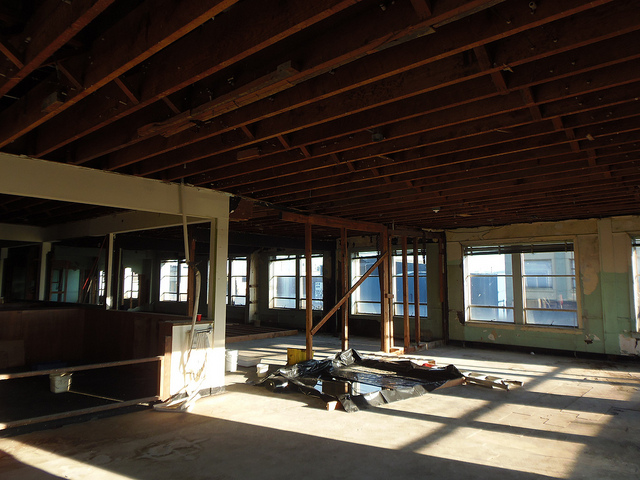Finch Building
Status: Lost
Year Listed: 1992, 1999
Location: Aberdeen, Grays Harbor County
Politician, lumber magnate, real estate developer, and philanthropist Edward C. Finch opened his eponymous building at Heron and H Streets in downtown Aberdeen on April 1, 1910, about 20 years after the town’s incorporation. The Finch Building was the first in town with an elevator and the first commercial building to make use of reinforced concrete. The building’s Renaissance Revival design by the noted Seattle architect A. Warren Gould featured terra cotta details, and six storefronts which were active into the 1970s.
The Finch Building was largely unaltered on the exterior when first listed as Most Endangered in 1992 and again in 1999, but by the latter date all the storefronts were boarded up. The interior had suffered a great deal of deterioration. Other Washington Trust efforts to save the building, led by treasurer Les Tonkin, a Seattle architect, included city council testimony and the filing of an affidavit supporting preservation. The affidavit stated that the city was not paying heed to the options for preservation stated in the 1998 Final Environmental Impact Statement. Recognized city needs, such as a library and downtown affordable housing, were among the possible uses, and developers had expressed interest. However, the city of Aberdeen declined to accept any renovation proposals.
The Finch Building was demolished on April 5, 1999 at age 89 years and five days.
Read more from our “40 for 40” featured story from the Washington Trust’s 40th anniversary in 2016.

